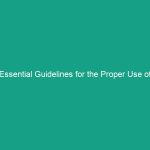Introduction
Good morning team! Today, we are going to discuss a critical aspect of our Workplace Safety: Essential Guidelines for the Proper Use of Hoists and Cranes Safety. Understanding and implementing these guidelines is vital to ensure not only your Safety but also the safety of your colleagues and the overall efficiency of our operations.
Hoists and cranes are powerful tools that make lifting heavy loads easier, but they come with inherent risks. Ignoring proper Safety Measures can lead to severe injuries or even fatalities. Let’s dive into the essential guidelines that will help us work safely and effectively with these machines.
Understanding Essential Guidelines for the Proper Use of Hoists and Cranes Safety
The term Essential Guidelines for the Proper Use of Hoists and Cranes Safety refers to the Best Practices and Procedures that must be followed when operating or working near hoists and cranes. Understanding these guidelines is crucial as it directly impacts our daily operations and helps prevent accidents.
Many employees may think that as long as they are following basic operational procedures, they are safe. However, safety goes beyond just operating machinery; it involves understanding the Environment, recognizing Hazards, and using equipment correctly. Safety is a collective responsibility, and we all play a part in maintaining a safe work environment.
Key Hazards, Risks, and Safety Considerations
When it comes to hoists and cranes, it’s essential to be aware of the specific hazards and risks associated with their use:
- Overloading: Exceeding the load capacity of hoists and cranes can result in equipment failure.
- Improper Rigging: Incorrectly rigged loads can shift during lifting, causing accidents.
- Inadequate Training: Operators who lack training may not recognize dangers or operate machinery correctly.
- Environmental Hazards: Weather conditions can affect operations, making it dangerous to use cranes outdoors during storms.
- Electrical Hazards: Working near overhead power lines can lead to electrocution if proper Precautions are not taken.
Ignoring these hazards can lead to serious consequences, including injuries, property damage, and even legal repercussions for the company. Therefore, it is our responsibility to acknowledge these risks and implement appropriate Safety Measures.
Best Practices, Procedures, & Actionable Advice
To ensure safety while using hoists and cranes, follow these Best Practices:
1. Pre-Operational Checks
Before operating any hoist or crane, conduct thorough pre-operational checks, including:
- Inspecting equipment for any visible damage.
- Checking the load capacity and ensuring it is not exceeded.
- Verifying that all safety devices are operational.
2. Proper Training and Certification
Ensure that all operators are adequately trained and certified. Continuous education is vital to keep everyone updated on safety protocols and equipment Operation. If you notice someone operating equipment without proper training, report it immediately.
3. Using Personal Protective Equipment (PPE)
Always wear appropriate PPE such as hard hats, gloves, and safety shoes when working in areas where hoists and cranes are in operation. This equipment can protect you from potential hazards.
4. Communication
Effective communication among team members is crucial during lifting operations. Use clear signals or two-way radios to ensure everyone is aware of what is happening. Always establish a designated signal person for lifts involving multiple workers.
5. Load Handling Procedures
Adhere to proper load handling procedures:
- Ensure loads are balanced and secure before lifting.
- Never lift a load over people.
- Use tag lines to control the load and prevent swinging.
6. Environmental Awareness
Be mindful of your surroundings. Watch for weather changes that could impact safety. For instance, strong winds can make crane operations dangerous. If conditions change, halt operations until it is safe to continue.
7. Regular Maintenance
Ensure regular maintenance checks are performed on all hoists and cranes. This will help identify potential issues before they become serious problems. Follow the manufacturer’s guidelines for maintenance schedules.
Regulations, Standards, and Compliance
Compliance with safety Regulations is non-negotiable. Familiarize yourself with relevant OSHA regulations, which outline the necessary safety Standards for hoists and cranes. Here are some key points:
- osha Regulation 1926.550: Addresses the safety standards for cranes and derricks in construction.
- ANSI B30.2: Covers the safety standards for overhead and gantry cranes.
- ISO 4301: Provides guidelines for the classification of hoisting equipment.
Compliance is critical not only for legal reasons but also for protecting yourself and your coworkers. When we follow these regulations, we create a safer work environment for everyone.
Employee Engagement & Discussion
Now that we’ve covered the essential guidelines for the proper use of hoists and cranes safety, let’s open the floor for discussion. What safety challenges have you encountered related to hoists and cranes? How can we improve our safety practices? Please feel free to share your thoughts and experiences.
Conclusion & Key Takeaways
In conclusion, understanding and implementing the Essential Guidelines for the Proper Use of Hoists and Cranes Safety is essential for maintaining a safe workplace. Remember to conduct pre-operational checks, receive proper training, wear PPE, communicate effectively, and always be aware of your environment.
By prioritizing these practices, we can significantly reduce the risks associated with hoists and cranes. Thank you for your attention and commitment to safety. Let’s continue to work together to create a safer work environment for everyone!


